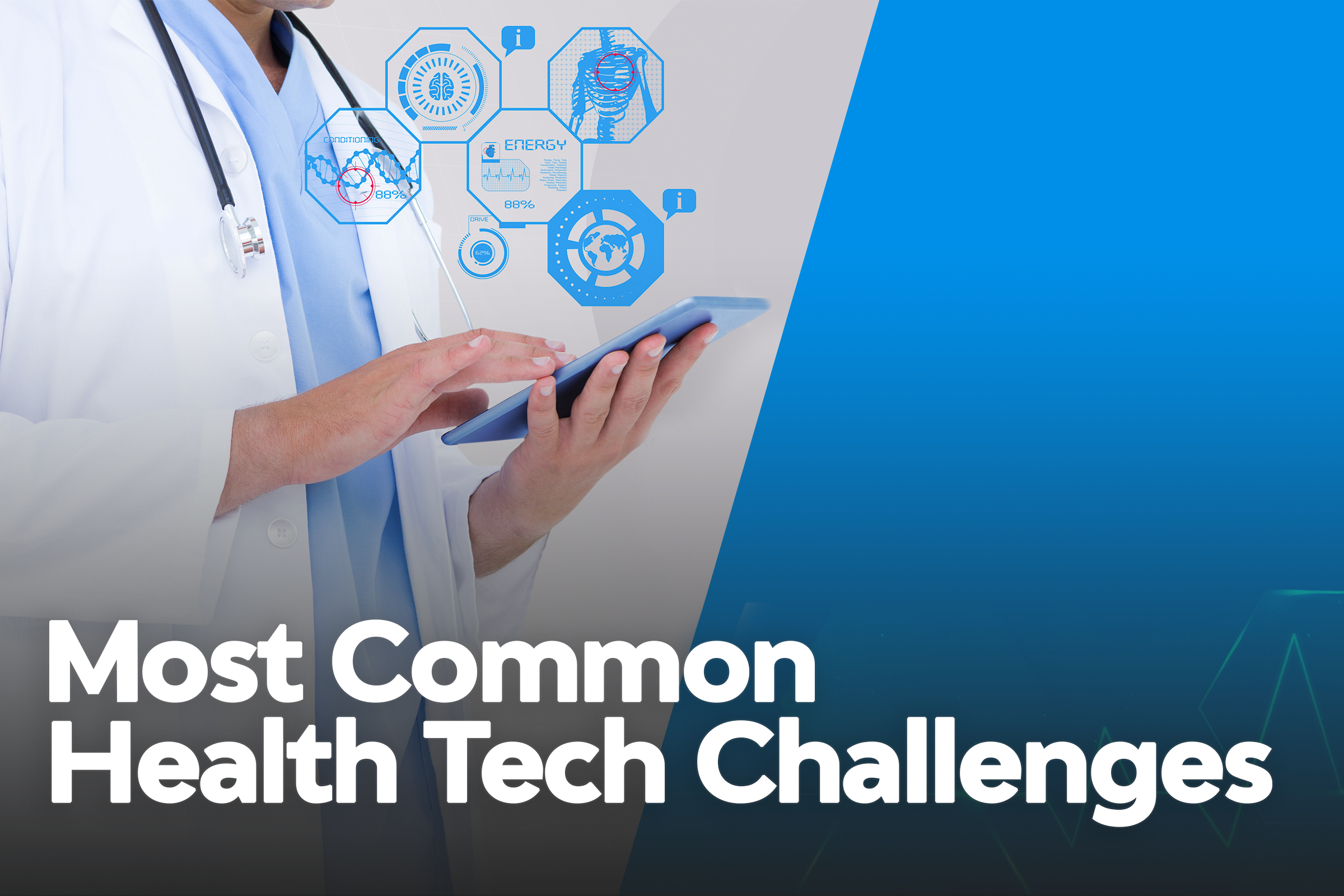
Healthcare technology requires specific knowledge of numerous interconnected systems and processes, which is the reason why healthtech challenges are so common in the modern world. Every cog in the system must work together for the healthcare company’s operations to run smoothly and the technologies that are used within the organization serve that very purpose.
The digital revolution is forcing healthtech companies to get creative in finding solutions to the growing number of problems that this progress is creating itself. Software, hardware, cloud-based computing, and a host of other tools are designed to simplify every process from patient records and payment information to virtual communication, medications, dosing, and more.
This article untangles the common problems health technology companies face in today’s digital environment. For example, interoperability is a growing problem for the industry as the use of healthtech becomes more mainstream. Maintaining security, upholding HIPAA regulations, replacing outdated systems, and raising capital to fund expensive software upgrades are all common healthtech challenges.
Let’s look at one major example around how healthtech companies go about raising capital. One way is by utilizing venture capital funds like SmartGateVC, a pre-seed venture capital fund out of Silicon Valley.
SmartGateVC funded the startup responsible for creating one of Time Magazine’s best inventions of 2021 – Robin the Robot.
Robin is an AI-based companion robot that is already in use in facilities in the United States. She was designed to bring comfort, ease anxiety, and cure loneliness among children in hospitals and clinics. Created by entrepreneur Karen Khachikyan and a team of technology buffs, Robin can recognize and respond to a child’s emotions and can even explain medical procedures to soothe nerves.
The combination of capital, innovation, technology, and drive can do amazing things. But before we can get there, we need health technology companies to step in and create the systems that will drive the future. Understanding and mitigating the common challenges faced by health tech companies is the first step.
Healthcare Challenges with Interoperability
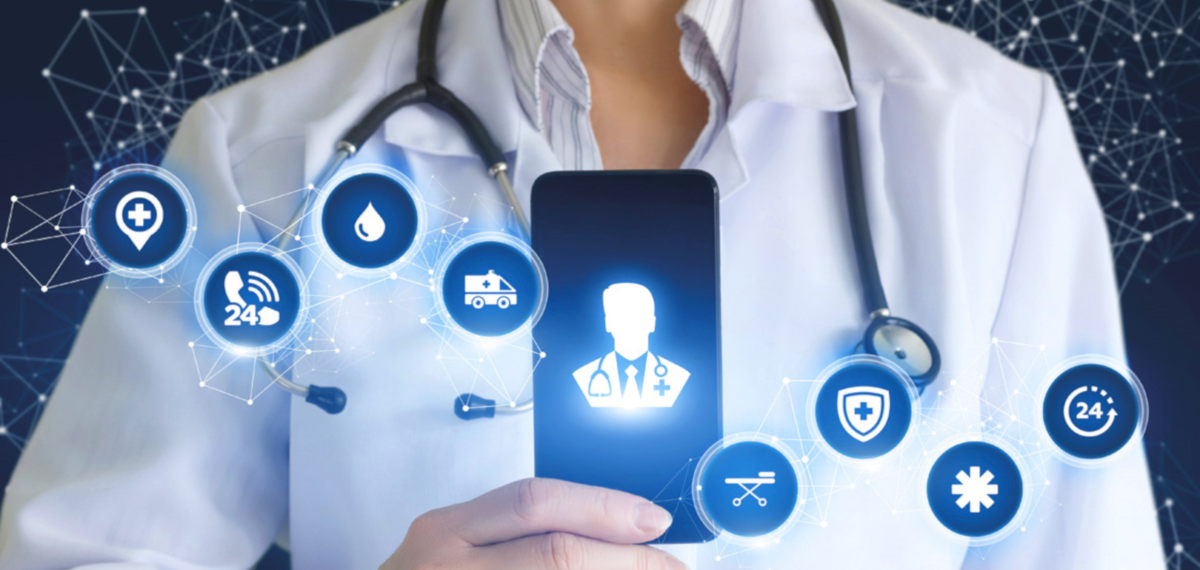
One of the most common health tech challenges faced by organizations is the matter of interoperability.
Today, electronic health records (EHRs) are used to collect, maintain, and store a large amount of information regarding a patient’s medical history and treatment plans, including diagnoses, medications, treatment plans, immunization records, listed allergies, images from radiology, and test results.
Aside from electronic medical records (EMRs) that include patient data, healthcare software can include other kinds of information relating to a patient’s private information such as tracking appointments, insurance claims, payment, financial information, and more.
Types of Healthcare Software
- Scheduling software
- Medical billing software
- Organizational financial management
- Patient engagement software
- Telemedicine systems
- Diagnostic software
Virtually every piece of information generated about a patient from the moment they step through any healthcare provider’s door is kept within an electronic record. However, EHRs do more than just store information, they can also be used by healthcare providers to guide and inform decisions related to patient care through evidence-based tools and AI.
One of the biggest benefits of health tech is the capability to streamline, automate, and simplify workflow. Less time spent updating and rectifying patient charts is more time spent on actual patient care. In addition, EHRs make it possible for the information to be shared with other providers across different organizations.
According to HealthIT.gov, more than 95% of hospitals use electronic health records. The same source found that hospitals who can send, receive, find, or integrate external patient data were twice as likely to use their EHR data than those who did not have the same level of interoperability.
The use of EHRs are extremely beneficial to healthcare providers. It allows users to streamline workflows and easily access information. EHR systems are commonly used to improve quality of care, monitor patient safety, and measure the overall performance of an organization.
Facing the challenges of interoperability will require a large-scale shift. Centralized databases that are secure, safe, and interconnected will allow healthcare organizations to communicate data quickly and easily without details getting lost in translation.
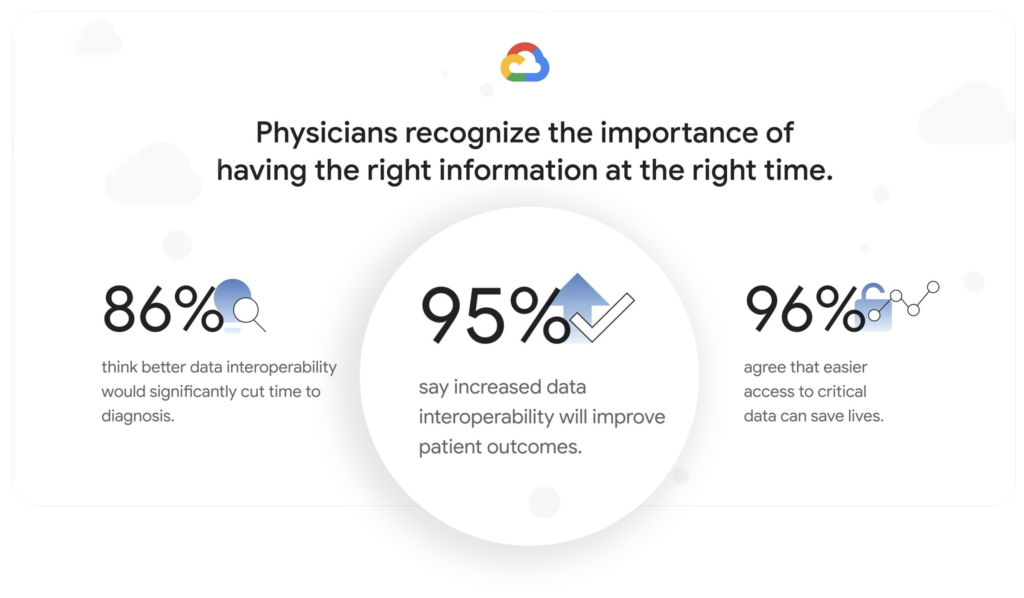
Medical providers seem to think the benefits outweigh the challenges. Studies show 95% of doctors agree that enhanced interoperability will ultimately improve patient outcomes.
Benefits of Healthtech

Despite common healthtech challenges that organizations face when implementing new systems, the benefits of doing so far outweigh the struggles. Here are just a portion of the ways health tech can benefit medical providers, patients, and the healthcare industry as a whole:
Better Patient Monitoring
Patients are central to the healthcare industry, as they should be. Healthtech provides new ways for doctors to monitor patients remotely with the use of software that can examine, monitor, and diagnose conditions from anywhere.
Improved Patient Care
Every aspect of healthcare technology comes down to one thing: improving operations for doctors, hospitals, and medical providers to in-turn improve patient care.
Better Equipment Management
Healthcare tech can be used to monitor medical equipment used by providers around the world. And with the hefty price tag attached to these complex medical devices, providers need to take every action to maintain them.
Reduction in Errors
Medical errors have both a financial cost and an extreme cost to patient health and well-being. Healthcare tech provides automated oversight that can prevent these often-deadly mistakes, by automating tasks and alerting providers of potential mistakes before they happen.
Improved Security
Healthcare involves the storage and transfer of delicate data, from patient records to financial information. Having an updated and secure system in place provides a secure, digital space for records that can be guarded and protected from unauthorized access.
Improved Diagnostics
The medical field is constantly evolving and the use of healthcare technology has become invaluable for many diagnostic tasks. Healthcare tech has many uses within the diagnostic sector and providers can utilize advanced AI and software programs to work together with existing technologies, improving outcomes for everyone.
Automation and Integration
The inclusion of automation has benefited providers by streamlining processes and procedures. Automation is a huge time saver for organizations and allows a simplified method to complete repetitive tasks and replaces the need to fill out endless reams of paper charts.
Improved Standards
Healthcare technology sets a standard of care and operation that is followed by every participant in the process. Every interaction that occurs within a healthcare organization is structured, documented, and followed up on to ensure uniform standards across the board.
Adaptable and Scalable
With the rapidly changing environment of the healthcare and technology sectors combined, medical providers need a way to keep up. Healthcare technology allows for that by being adaptable, scalable, and flexible.
The Importance of Healthcare Technology
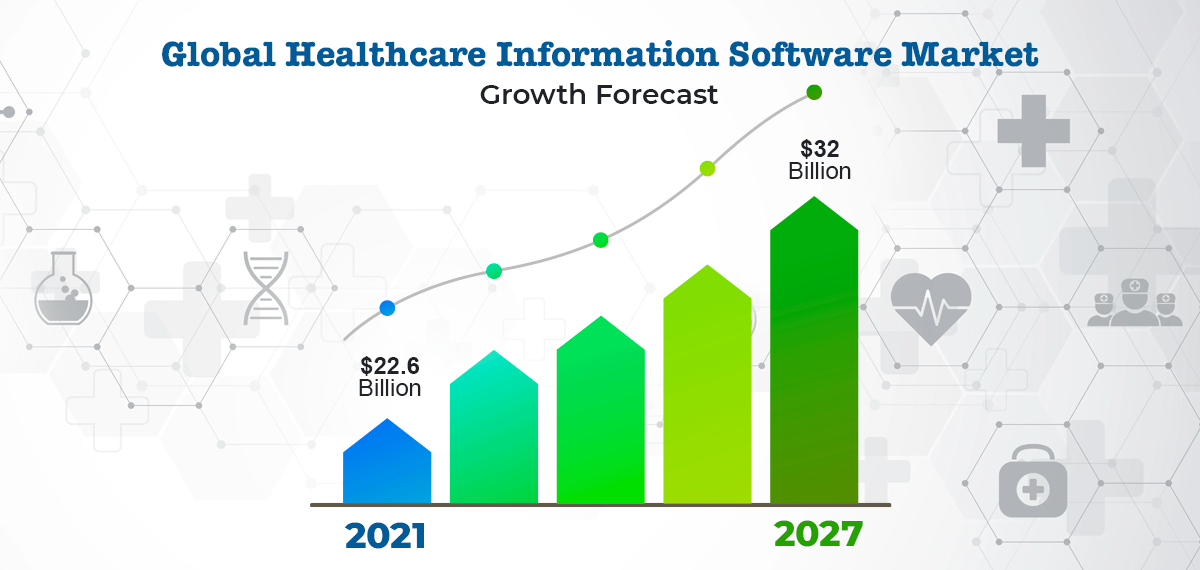
Research shows that the global healthcare information software market was worth $22.6 billion in 2021 and is expected to grow to almost $32 billion by 2027. The enterprise healthcare software market alone is expected to be worth $8.2 billion by 2023.
That’s a significant portion of the global economy and the market is exploding at a rapid pace. This is one reason organizations need to understand and mitigate common health tech challenges.
So why is healthcare technology a vital component of the healthcare sector? Aside from the benefits that medical organizations can gain, federal regulations and policies have made healthcare tech more than beneficial – it’s now a vital component for medical providers. Here’s why:
Patients Demand Technology
Patients understand the way technology has advanced and how those advancements benefit not only themselves but the global world. Individuals seeking medical care in today’s environment expect thoughtful care but they demand it on their terms.
A 2021 study by Market Measurement found that the three most important factors for adults in the U.S. when engaging with healthcare are ease of access to care, privacy, and data security.
That means easy access to appointments, both in-person and virtual. It means they want to look over their medical chart on their mobile phones, and they expect their private information to be fully protected while they do so. All these things are achievable with healthcare technology.
Efficiency is Mandatory
Healthcare workers have a lot to manage on a minute-to-minute basis. At the height of the pandemic and beyond, medical workers were pushed to the brink of their capabilities, often struggling to manage the influx of patients and information flooding in at the same time. While many feel a sense of normalcy has returned, the pandemic certainly proved that efficiency is a key component of success for patients and providers.
Healthcare technology is one way that medical providers can manage the chaos by streamlining processes, saving time, improving communication, and consolidating information into a single record that is easily accessible and accurate. It allows providers to continue seeing patients remotely, even during a global pandemic, so that patient care can happen from anywhere.
Technology is Intertwined with Medicine
There’s no going back – healthcare tech is an integral part of almost every medical procedure, test, device, and process used today. Very little happens in the healthcare sector that is not touched by technology in some way.
Wearable medical devices can monitor a patient’s weight, continuously check glucose levels, monitor sleep patterns, check for cardiac events, and even deliver lifesaving interventions automatically.
More than that, health tech is using analytics, AI, and machine learning to harness this big data and use it to create better care procedures, develop medicine, and predict health trends.
Big Data Getting Bigger
Big data is a term used to describe large sets of data used in numerous ways to improve patient care, manage operations, streamline processes, develop policies, and more. In essence, it’s the information that is used to shape the future of healthcare.
Healthcare tech plays a vital role in the way organizations gather, store, secure, and use big data. With such a large database of information, software systems need to be in place to ensure that information is usable, accessible, and stored safely.
How is Health Tech Improving the Healthcare Industry?

Some of the common health tech challenges, like interoperability and cyber-security, will continue to be a struggle for organizations until a unified effort is made across the industry. When that shift starts to happen, healthcare tech will stand at the forefront of the effort to find solutions.
Healthcare tech is transforming the way healthcare is structured in almost every possible way. It’s an ever-changing landscape of advancing tools designed to improve the overall health and well-being of the entire global community.
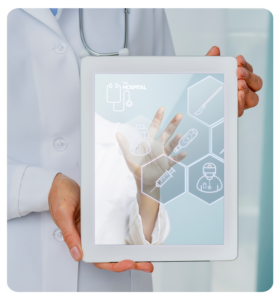 Technology – Hand in Hand with Innovation
Technology – Hand in Hand with Innovation
Healthcare technology allows for innovation and growth within the industry. Let’s consider the speed at which researchers needed to develop and distribute a safe and effective vaccine after the global outbreak of a deadly pandemic, none of that could have been possible without healthcare technology.
The growth of the healthcare technology sector has improved more than just doctor-to-patient care. Advanced technologies like AI, computer-based learning, cloud computing, and the Internet of Medical Technology (IoMT) are changing the future of medicine by giving researchers and providers the tools to see into the future.
New drugs and procedures are in development every day. Post-pandemic, healthcare technology has become an even more important tool. Researchers and healthcare experts are working in tandem to predict and, hopefully, prevent future disease outbreaks before they occur.
 The Importance of Healthtech
The Importance of Healthtech
Medical errors are one of the biggest problems in the healthcare industry and this is not a new problem for providers. Healthtech has gone a long way toward reducing the number of errors that occur by using structured double-checks and safeguards designed to catch potential errors.
The use of technology to document medications and dosing information can help providers by ensuring the right medication is given to the right patient at the correct time. Potential drug interactions are automatically flagged and providers are alerted. And the interconnectedness of healthcare technology allows this information to benefit not only the prescribing doctor but every healthcare provider who accesses a patient’s electronic record.
Patients no longer need to remember which medications they are currently taking because technology does it for them. Medical records can be accessed, reconciled, checked, and double-checked whenever necessary.
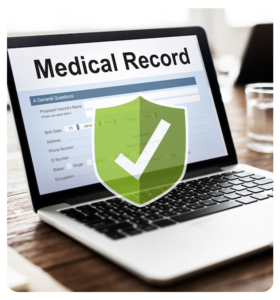 Information – Accessible, Measurable, and Secure
Information – Accessible, Measurable, and Secure
Healthcare technology software has improved patient care by innovating and streamlining the way information is used. Improved access and communication between organizations is a revolution in the way patient care is conducted.
Technology also allows information to be seen on a wider scale, allowing medical researchers and providers to see the picture data creates over a longer period. This can make trends more visible, help providers see issues before they even manifest, and improve overall patient care.
Health tech has certainly improved the ways medical information is stored by creating a secure digital database for patient records. Ensuring data is gated for only authorized users helps protect patients’ privacy and security, and helps healthcare providers safeguard their operations.
The Cost of Healthcare Technology

Balancing the operating budget is one of the most common headaches for healthcare organizations, a high cost to providers is one of the most common health tech challenges. Healthcare operations are already an expensive undertaking.
Statistics show that healthcare providers currently spend an average of $40 million on IT programs annually. From the same source, 40% of healthcare providers in the U.S. say their IT and technology budgets are increasing.
Considering the hefty price tag attached to many healthcare technology systems, that’s not surprising. Managing that high cost becomes even more difficult for smaller private practices and organizations. While large, multi-unit hospitals may have the dollars laying around for large expenditures, many smaller practices do not.
Why are healthcare technology systems so expensive? A lot of it has to do with competition within the market and demand for improving technologies. However, there is an underlying cost involved with implementing any new system, then there is an ongoing price associated with maintaining that system.
Let’s look at some of the costs associated with healthcare technology.
- Replacing legacy systems – Implementing a new system from the ground up will have built-in costs associated with building and launching that system, integrating existing information and training staff.
- Ongoing maintenance and repair – Healthcare tech systems will require ongoing maintenance from a team of IT professionals with the knowledge and training to solve problems and keep systems up-to-date and operable.
- Upgrading – In the rapidly changing world of technology and healthcare, upgrades to a system will be necessary to keep up with industry changes and improvements.
- Electronic records and online portals – Yes, there are many benefits of utilizing healthcare tech to centralize data, but there are underlying costs as well. Integrations, training, cybersecurity, and digital platforms all have price tags of their own.
- Medical equipment – Whether it’s on-site medical equipment or remote, wearable devices that use software programs, costs increase when equipment and technology work together.
- Digital payment systems – Financial transactions that occur digitally have their own set of rules and regulations that must be followed, and so increase the cost for providers who wish to remain legal and secure.
Security and Data Privacy
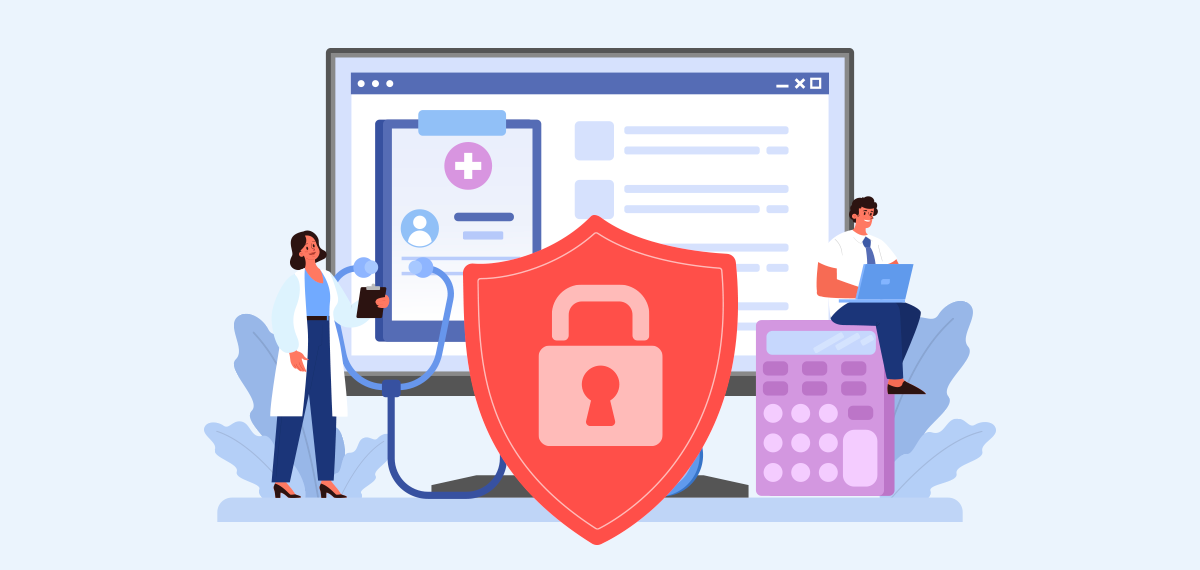
Cybersecurity is a growing issue in almost every industry today and healthcare is no different. We’ve already mentioned how cybersecurity is a primary concern for those seeking medical care in the U.S. There’s no denying that the issues of security and data privacy are certainly one of the biggest and most common health tech challenges in today’s digital environment.
The nature and quantity of information stored and shared in the healthcare sector make the risk of data breaches and cyber attacks an even bigger threat. Add to those factors regulations like the Health Insurance Portability and Accountability Act (HIPAA), and the complexity and importance of managing patient privacy and data security only grows.
While cloud services have both cost and operability benefits for users, they also increase the risk of security breaches. Statistics show that over 13% of the cloud services used in the healthcare industry are at high risk and an astonishing 77% are at medium risk.
As the use of healthtech increases so does the risk of data breaches. Recent studies show that cyberattacks in the healthcare sector account for 33% of all incidents in 2021. This statistic clearly shows that healthcare is one of the most desired and vulnerable targets for cybercriminals. Statistics show that 2021 saw over 40 million patient records in the U.S. compromised due to cyber-attacks.
Ransomware Attacks
History shows that healthcare organizations are most at risk for ransomware attacks. A report from 2020 showed that 34% of healthcare organizations worldwide were affected by ransomware attacks that year and 65% of those organizations reported that cyber criminals successfully encrypted data and held it for ransom, 34% paid the ransom to get their data back.
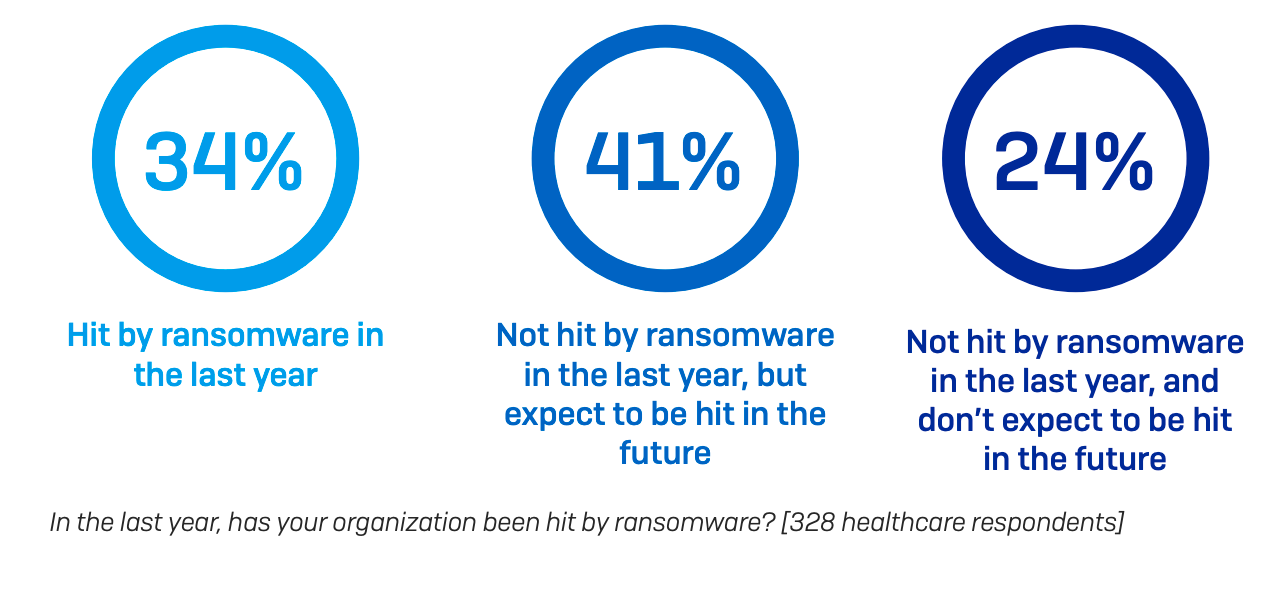
The best protection from ransomware attacks is a secure network – which means keeping systems up to date, utilizing firewalls, virus protection, and multifactor authentication to safeguard information and prohibit unauthorized access.
Phishing Attacks
Phishing attacks are a common choice for cyber criminals across all industries, with 81% of organizations reported being affected in 2021. Email-related cybercrime in the healthcare industry increased by 42% in 2021.
Phishing attacks have expanded to include Business Email Compromise (BEC), which targets email accounts of users who perform legitimate transfer-of-funds requests. The FBI dubbed the BEC as the “$26 billion scam.”
Phishing attacks can be avoided by educating employees and users on how these types of breaches happen, warning signs to watch for, and procedures to follow when a suspected phishing attack occurs.
Hacktivism
Hacktivism involves groups of criminals working together to infiltrate networks and breach security systems to gain access to private data. Some are in it for the money, which can be a substantial sum when it involves a healthcare institution. Others are in it for political motivations or reasons related to social activism.
Preventing hacktivism requires a fully-centric security plan. Organizations need to ensure on-site access to networks and databases is protected, as well as take precautions to safeguard access through mobile devices.
Operator Error
Employees and users who access sensitive data increase the risk of accidentally exposing private information, either through sending unencrypted data by mistake, not following security procedures, or not protecting passwords and access information.
Reducing human error comes down to better training and increased oversight. When employees know what is acceptable and what is not, and managers are equipped with the tools to monitor data usage and access, security will improve.
How to Prevent Cyber Attacks

The best way to safeguard data and networks from criminals is to stay current on system updates, which often include security patches. Thorough oversight into the way employees use data, gated access for networks and data, and security features designed to monitor data both entering and exiting a network can help.
Below are a few best practices organizations can use to minimize their risk of cyber-attack:
- Train staff in cybersecurity procedures
- Implement multi-factor authentication
- Establish access blocks for applications and data systems
- Control, log, and monitor data usage
- Encrypt data whenever possible
- Maintain mobile device security
- Ensure systems are up-to-date
- Conduct vulnerability assessments regularly
- Assess the security of vendors, partners, and associates
- Double back up sensitive data
The Risks of Outdated Health Tech

The healthcare industry is rife with cyber-attacks because of the nature of the information collected and stored within its networks. But another common health tech challenge relates to the aging technology systems in place in many healthcare facilities around the globe. It is estimated that the healthcare industry loses $8.3 billion every year as a result of outdated technology.
Organizations that don’t have the budget to upgrade their health tech systems may be using outdated technology that can’t protect from today’s hackers and cybercriminals. This leaves patient information and sensitive data wide open and makes these organizations a tempting target.
Performing frequent updates is one way to limit the ways cybercriminals can access private networks. However, legacy systems may be too old to benefit from the security patches that are included in updates. In that case, there’s no source of protection standing between patients, providers, and cyber-criminals.
Curious to know just how big of a problem a cyber-attack can be for a healthcare organization? Considering it’s estimated that data breaches will cost healthcare companies a total of $6 trillion over the next three years, the financial cost is high. However, the cost to individuals and patients is likely even higher.
Below are listed some of the largest data breaches that occurred in 2020 and 2021.
The University Medical Center
The University Medical Center in Las Vegas was the victim of a ransomware attack in June 2021, exposing the personal data of 1.3 million people as a result. According to UMC, hackers were able to gain access to the network and certain file servers, which included sensitive patient data.
St. Joseph’s/Candler Hospital
That same month, St. Joseph’s/Candler Hospital in Savannah, Georgia reported a cyber-attack involving an unauthorized party gaining access to the organization’s network and launching a ransomware attack, essentially locking system files from access. The hospital reported a total of 1.4 million patient records were possibly exposed.
Accellion
One of the largest breaches in 2021 involved Accellion, a U.S. technology provider that used an outdated, 20-year-old file transfer system. The breach affected over 3.51 million people. The scale of this hack was so large because it affected 100 different organizations, however, the healthcare sector saw the most damage.
Florida Healthy Kids Corporation
In February 2021, the Florida Healthy Kids Corporation fell victim when unauthorized users gained access to their system – and the records of over 3.5 million patients. The cause of one of the largest data breaches in the healthcare sector in history? The facility’s web hosting provider failed to update security patches for over seven years.
Challenges That Health Tech Companies Face

Creating new technology for any industry is a heavy task, but the healthcare sector comes with its own unique set of challenges. The huge amount of data and information involved, federal privacy and policy regulations, and the need for interconnected communication are all common health tech challenges that must be overcome.
HIPAA
The Health Insurance Portability and Accountability Act of 1996, better known as HIPAA, is a federal law that created a set of national standards designed to protect patients’ private health information. It is designed to prevent the disclosure of that information without the patient’s knowledge or consent.
In terms of health tech, complying with HIPAA requires specific safeguards that protect patient information at all times. Without these safeguards in place, organizations are at risk of penalties that could include fines and even criminal prosecution.
Regulatory Compliance
HIPAA is not the only regulatory concern health tech companies must navigate. As the use of software programs and medical devices increases, so too does the red tape. Regulations may vary by jurisdiction, so organizations need to understand what is required every step of the way.
Hiring and Staffing Top Talent
New technology requires fresh faces to implement, manage, and maintain advancing systems. Healthcare organizations that invest in healthcare tech should make every effort to bring the right people on board to help implement and service systems. IT professionals will require a specific skill set to manage technology systems.
Innovating – Rather Than Duplicating
Because healthcare technology is a rapidly growing field, the market is expanding at a matching pace. While healthy competition is often a driver for innovation, there is a risk of supplementing duplication over innovation.
Upstart companies are entering the market with the same product and service offerings that are already out there, instead of working to develop something better. This practice stagnates progress instead of inspiring innovation and growth that will benefit patients and organizations.
Raising Capital
Implementing new technologies is an expensive undertaking – a fact that holds even more true in the healthcare industry. Health tech companies must get access to funding and capital that will help create the kind of growth and innovation that is needed in the healthcare sector.
One way health tech companies can raise capital is to find a partner, such as a venture capital fund. SmartGateVC is one example of a company working to support health technology companies by helping them raise the necessary capital.
Utilizing a venture capital fund, such as SmartGateVC, gives health tech companies access to a group of individuals, teams, and professionals who know their way around the healthcare industry and know how to build successful ventures. Companies may often gain benefits in the form of mentorship, guidance, discount packages and credits on services, and access to invaluable training.
Final Thoughts…

The way the world has changed since the pandemic cannot be understated, especially in the health and technology fields. However, even before Covid-19, the world was shifting toward all-things digital, the pandemic merely forced the transformation to happen faster.
The ever-changing nature of digital technology has complicated the way clinicians, hospitals, and organizations use these tools. While the benefits of improving technologies are uncountable, the challenges that go along with rapid growth are certainly growing just as quickly.
Healthcare organizations and software companies that create health technologies share common challenges and are each traveling a unique yet intersected path. Working together to innovate, create, and improve the lives of patients around the world is a noble cause and by dealing with common health tech challenges head-on, we can get there.









